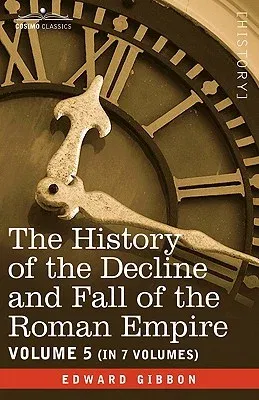The History of the Decline and Fall of the Roman Empire is Edward
Gibbon's magnum opus, written and published over a 13-year period
beginning in 1776. It not only chronicles the events of the downfall
starting with the end of the rule of Marcus Aurelius, but proposes a
theory as to why Rome collapsed: the populace, Gibbon theorizes, lost
its moral fortitude, its militaristic will, and its sense of civic duty.
History is considered a classic in world literature, and Gibbon is
sometimes called the first "modern historian" for his insistence upon
using primary sources for his research. Many scholars today still use
his highly regarded work as reference. In this fifth of seven volumes,
readers will find Chapter 45 ("State of Italy Under the Lombards")
through Chapter 51 ("Conquests by the Arabs"), which cover the reign of
Justin II; the Lombards' conquest of Italy; the Franks' conquest of
Italy; the reign of Tiberius II; the life of Gregory the Great; and the
rules of Phocas and Heraclius; the development of Christianity in the
Eastern Roman Empire and the councils of Ephesus, Chalcedon, and Nice;
the Greek emperors of Constantinople; the rule of Charlemagne of France
and the division of his empire upon his death; and the clash between the
Arabs and the Eastern Roman Empire. English parliamentarian and
historian EDWARD GIBBON (1737-1794) attended Magdelan College, Oxford
for 14 months before his father sent him to Lausanne, Switzerland, where
he continued his education. He published Essai sur l'Étude de la
Littérature (1761) and other autobiographical works, including Mémoire
Justificatif pour servir de Réponse à l'Exposé, etc. de la Cour de
France (1779).


